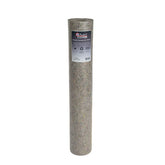In the world of organization, packing, and securing objects, it becomes elastic band with hook Generally ignored. However, this rather common device has an intrinsic flexibility that can be used to optimize processes and provide real solutions in various situations. Whether it's resolving kinked cables, supporting objects during transport, or creating temporary connections, mastering the use of a elastic with hook can make a huge difference in someone's lifestyle. To reach the full potential of elastic band with hook To unlock this, here's a step-by-step guide to the mechanics and uses, expanding your knowledge on choosing the right rubber band and best practices for securing items, along with storage and maintenance tips that go beyond the basics.
Choosing the right elastic band
Choosing the right rubber band is crucial for storage and depends on your specific needs and the items you're organizing. Here are some key factors to consider when choosing the perfect rubber band for your needs.
-
Material: Choose a rubber band that is highly durable and offers ultimate elasticity and flexibility. It should be perfectly usable and able to withstand extreme weather conditions and temperatures without wearing or tearing when used outdoors. This will ensure you can use it effectively during temperature fluctuations.
-
Tensile strength: The elastic strap with higher tensile strength can effectively wrap heavy objects without tearing or cutting. It must be highly elastic and offer greater holding power to effortlessly secure bulky items.
-
Mate: Considering the size of your elastic band is essential to help you hold your items efficiently without breaking, or to easily carry lighter items without loose ends. Consider the factors of band width, diameter, and length when choosing your elastic band.
-
Types of hooks: There are several sizes and types of hooks to choose from, depending on your needs and preferences, and the type of load you're trying to secure. You can choose hooks that offer versatility and can be easily attached to various surfaces.
-
Intended use: It's important to choose the elastic band based on its intended use and the benefits of your task. Factors such as indoor or outdoor use, temperature resistance, heavy or light loads, ease of installation, and much more should be considered when choosing the right elastic band for you.
Elastic band from AVOID
The Span Elastic of
The Span Elastic of
-
High-quality elastic material that is resistant to tearing and loosening, even after repeated use over a long period of time.
-
A sturdy hook at each end for reliable attachment and provides a secure grip on heavy loads for safety.
-
Durable material that can withstand extreme weather conditions, temperatures and stress.
-
Multiple size options to choose from to suit your needs and preferences.
-
Versatility to load and secure any type of item or object, whether it's your travel luggage, transporting goods or using as a elastic for tents to bundle tent poles.
Correct attachment techniques for elastic with hook
Proper fastening techniques for the elastic band with hook for storage are essential to ensure both safe storage and to prevent damage to the stored items.
-
Correct weight distribution: Wrap and hook your elastic carefully to balance the weight around the surface to avoid slippage or tension on either end.
-
Pay attention to anchor points: Check for anchor points for your hooks to attach to ensure a secure grip on loaded items and limit any risk of damage.
-
Voltage management: Avoid overstretching the elastic over a single end to prevent damage to the elastic by compromising its elasticity over time or the items you are trying to secure from slipping.
-
Protect fragile items: Use softer packing materials like foam, bubble wrap, and more to protect the fragile items in your cargo.
Best practices for stability and security
It elastic band with hook It's an incredibly versatile tool, but its inherent elasticity and the potential for hook slippage can pose safety risks if not used correctly. Keep these best practices in mind for stability and safety when using elastic bands.
-
Choosing the right tire: It is essential to choose the right elastic strap depending on the type of load or objects you are trying to secure.
-
Correct confirmation: By attaching the hooks to the correct anchor points, you can create a perfect balance over the weight of your load and avoid tension over a single end.
-
Safety considerations: Try to handle your stretched elastic band gently to prevent it from snapping, which could cause significant injury, by maintaining appropriate distance and wearing essential safety equipment when necessary.
-
Additional items for a firmer grip: By using softer items for cushioning and additional anchor points for hooking, you can make your task of loading your objects with the elastic bands easier.
Storage and maintenance tips for elastic bands with hooks
The elastic band with hook Elastic bands are incredibly versatile, but proper storage and maintenance are essential to extend their lifespan and ensure they remain effective. Here are some storage and maintenance tips for your elastic bands to maximize their durability with simple measures.
-
Store in a cool, dry place away from direct sunlight and extreme weather conditions to prevent brittleness.
-
Avoid over-stretching the straps as this will compromise their elasticity and flexibility during minimal use.
-
Keep it away from moisture and always let it dry to prevent mold growth on the tire.
-
Avoid contact with chemical cleaning agents or solvents that may damage your elastic band.
Conclusion
When you learn how to make a elastic band with hook Using this step-by-step guide will open up a world of practical applications, from keeping things organized to effortlessly packing and tidying spaces. By considering the factors of proper tension, secure hooking, and precise placement, you can unleash this tool's full potential and maximize its impact and usefulness. Whether you're a DIY enthusiast, a professional organizer, or simply someone looking for efficient solutions to common problems, this tool, along with the right steps, will surely make your job easier, keeping things in place and performing tasks with ease. Visit the




